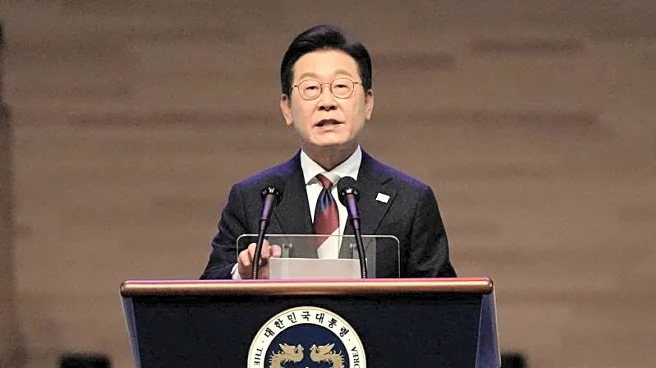What's Happening?
The Federal Communications Commission (FCC) made a significant decision in April 2020 by opening the entire 1.2 GHz 6 GHz band (5.925–7.125 GHz) for unlicensed use, thereby expanding Wi-Fi capacity in the United States. This move aligns with similar actions taken by countries in Latin America, Canada, Japan, and South Korea, which have also opened the full band for Wi-Fi, albeit with regional power limits and regulatory variations. The decision is part of a broader global trend where different regions are determining how to allocate the 6 GHz spectrum between mobile networks and unlicensed uses like Wi-Fi. The European Union, for instance, is currently evaluating proposals for the upper 6 GHz band, with a final recommendation expected in November 2025.
Why It's Important?
The FCC's decision to open the 6 GHz band for unlicensed use is crucial for expanding Wi-Fi capacity, which is essential for supporting the growing demand for wireless internet access. This move is expected to enhance connectivity, particularly in underserved and rural areas, and support the development of smart cities. By increasing the available spectrum for Wi-Fi, the U.S. aims to maintain its competitive edge in global technology leadership. The decision also reflects a strategic choice to prioritize unlicensed spectrum access, which can foster innovation and support a wide range of applications in healthcare, education, and industrial IoT.
What's Next?
As the U.S. continues to expand its Wi-Fi capacity, other regions are closely watching the outcomes of these regulatory decisions. The EU's upcoming decision on the 6 GHz band will be pivotal in shaping its digital strategy under the Digital Decade initiative. Meanwhile, countries like Brazil and India are still deliberating their approaches, with potential implications for global spectrum allocation strategies. The ongoing debate between licensed and unlicensed spectrum use will likely influence future policy decisions and technological developments worldwide.
Beyond the Headlines
The allocation of the 6 GHz spectrum is not just a technical issue but also a reflection of differing visions for digital strategy. The choice between licensed and unlicensed spectrum use highlights broader questions about control, access, and innovation in the digital age. As countries navigate these decisions, the outcomes will have long-term implications for infrastructure investment, digital inclusion, and global competitiveness.














